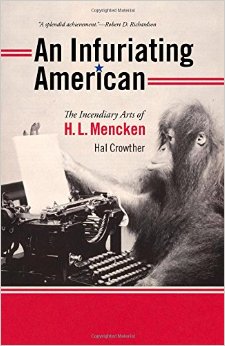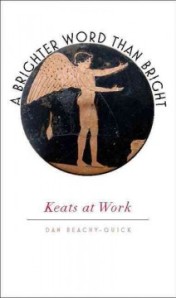It’s a new year, and as much as we’re looking forward to the 2014 reading list, we have some 2013 shelf clearing left to do. Here is a round-up of books we enjoyed, but were so busy reading we didn’t have time to review.
The Undeserving Poor: America’s Enduring Confrontation with Poverty: Fully Updated and Revised
Michael B. Katz
It’s been a quarter-century since the first edition of this book was published. Some  things have changed drastically: The first edition came out at the height of the Reagan-Bush era, whereas the new edition comes on the heels of major Democratic victories in 2012.
things have changed drastically: The first edition came out at the height of the Reagan-Bush era, whereas the new edition comes on the heels of major Democratic victories in 2012.
But some things haven’t changed: The cultural obsession of equating financial poverty with moral bankruptcy.
Katz does a wonderful job of exploring the evolution of blame-the-poor politics and the invention (and ongoing reinvention) of the underclass. It’s a slippery and interesting social history, and it brings to mind Foucault’s histories of mental illness and prisons.
One of the interesting takeaways for me is the human need to compartmentalize. There is a line drawn between the deserving and the undeserving poor. Women and children tend to occupy the first category, while men almost universally fall into the latter. Politically and culturally speaking, the line drawn between the two groups is solid and severe, with those on one side garnerng support and sympathy and the others disdain and even punishment.
The trouble is that the line, in reality rather than construct, is blurry.
America’s schizophrenic attitude toward poverty shouldn’t be surprising. It’s a country that went from agriculture to industry to technology, where the Roaring ’20s gave way to the Great Depression, which segued into an unprecedented era of prosperity. Where LBJ waged a failed War on Poverty, and his successors waged a failed War on Drugs, which has ultimately amounted to a war on the impoverished.
This is an excellent read for anyone with an interest in economics, politics or social history. It may not resolve any legislative debates, but it will lend the reader more thoughtful consideration of the topic.
Dark Visions: A Collection of Modern Horror
Edited by Anthony Rivera and Sharon Lawson
I have a longstanding love affair with the small horror press. They’re like neighborhood  bookstores: Some last, the majority fail (ultimately), but most of them are amazing while they last. And like that corner bookstore, they each have their own personality, though ostensibly they are all dealing in similar content.
bookstores: Some last, the majority fail (ultimately), but most of them are amazing while they last. And like that corner bookstore, they each have their own personality, though ostensibly they are all dealing in similar content.
Enter the first installment of Dark Visions from Grey Matter Press.
They certainly know how to plunge into the darkness: the anthology series begins with an original story from Jonathan Maberry—yes, that Jonathan Maberry. Best of all, his contribution, “Mister Pockets,” takes us back to a place I know and love so well: Pine Deep.
For those unfamiliar, Pine Deep is the small town in rural Pennsylvania that was the setting for Maberry’s first three novels, including Bad Moon Rising, the bad-ass conclusion to the trilogy that any horror fan should begin reading immediately. This is a place that knows how to celebrate Halloween—and there is plenty to be afraid of here. I loved this world that Maberry created, and I was ecstatic to return.
Like all anthologies, there is a little something for everybody, and not every story will be your cup of tea. The important thing is that the quality level is high and consistent throughout, and Dark Visions is certainly a cut above your average anthology.
There is one story in particular that I would like to single out, “The Weight of Paradise” by Jeff Hemenway. This is easily the best new horror story I read this year, and perhaps of even the past few years. It is thoroughly original, dark and morally complicated, the hallmark of great horror fiction. Unless the voting is rigged, this story should win many awards and be anthologized for years to come.
There are plenty of other dark delights as well, and I’m excited for the second installment, scheduled for a summer release.
The Best Specimen of a Tyrant: The Amitious Dr. Abraham von Norstrand and the Wisconsin Insane Hospital
Thomas Doherty
Aside from having similar names, nobody will mistake this Civil War doctor for beloved  television dermatologist Martin van Nostrand (though his Seinfeld portrayer, Michael Richards, like the original Dr. von Norstrand, later achieved a certain level of infamy loosely related to the war between the states).
television dermatologist Martin van Nostrand (though his Seinfeld portrayer, Michael Richards, like the original Dr. von Norstrand, later achieved a certain level of infamy loosely related to the war between the states).
This doctor, deftly brought to life by Thomas Doherty, left behind a trail of failed business and medical practices before his appointment to superintendent of the Wisconsin Insane Hospital. What distinguishes this book from the many institutional narratives (both fictional and real) is that we get a rounded view of hospital administration. Typically, the overseers of institutions are lampooned as either sadistic villains, naïve do-gooders or bungling bureaucrats.
The reality of institutions, and their employees and residents, is much more complicated than that.
For starters, you’re working with a unique population with difficult problems—otherwise your clients wouldn’t have been institutionalized in the first place. Also consider the varying talents between workers, as well as experience, burnout, and the daily stressors of the workplace.
Want to describe a day in the life of a health care worker? Spend an overnight shift in an ER or a detox and write down your observations. Then do that almost every night for five years and go back and review your initial impressions and see how they compare with your current view.
That’s why The Best Specimen of a Tyrant shines. Von Norstrand casts a thorny shadow, and he has the complexity of Greek tragedy. This is a book for anyone with an interest in the checkered and infinitely fascinating history of mental health care.
Hell Gate
Elizabeth Massie
In my MFA program, I was often teased for setting a majority of my stories within an  amusement park or carnival of some kind. What can I say? I’m a fan of works that intersect the routine reality of the everyday with the manufactured reality of the spectacle (see Something Wicked This Way Comes, Rides of the Midway, CivilWarLand in Bad Decline, etc.).
amusement park or carnival of some kind. What can I say? I’m a fan of works that intersect the routine reality of the everyday with the manufactured reality of the spectacle (see Something Wicked This Way Comes, Rides of the Midway, CivilWarLand in Bad Decline, etc.).
Therefore, Hell Gate combines some of my favorite themes. The story’s centerpiece is the friendship between a psychic and an orphan against the backdrop a series of grisly Coney Island murders. This will appeal to fans of historical thrillers and anyone who’s ever snuck backstage at the circus.











